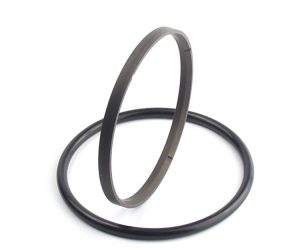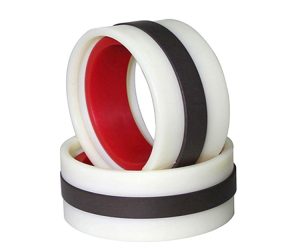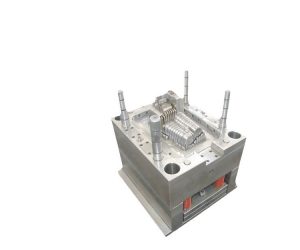Thermoplastic Polyurethane (TPU) Impressão 3D: A Paradigm Shift in Manufatura aditiva, Discover how custom 3D printed items can change the game, letting people show off their individual flair and cater to their specific wants through bespoke designs.
I. Introduction: Redefining the Limits of Material Performance
Additive manufacturing has witnessed a transformative evolution, propelled by the emergence of novel materials. Among these, Thermoplastic Polyurethane (TPU) stands out as a pivotal advancement, challenging conventional limitations in elasticity, durability, and application versatility. This polymer's unique properties are not merely incremental improvements; they represent a paradigm shift, enabling the fabrication of components previously deemed impossible through traditional manufacturing techniques. The implications extend far beyond simple material substitution, impacting design philosophies, product lifecycles, and the very definition of what constitutes "manufacturable."
A. TPU: A Material Characterization Beyond Simple Elasticity
TPU's inherent properties extend beyond the commonly cited "elasticity." Its viscoelastic nature, characterized by a time-dependent response to stress and strain, introduces complexities that necessitate a nuanced understanding of its mechanical behavior under dynamic loading conditions. This necessitates a shift from static design parameters to a more comprehensive approach incorporating viscoelastic modeling and simulation to predict long-term performance and fatigue life. Furthermore, the inherent molecular structure, specifically the interplay of hard and soft segments within the polyurethane chain, dictates the material's overall response to diverse environmental factors.
B. The Flexible Frontier: Beyond Consumer Applications
While the consumer market has embraced TPU's flexibility for applications ranging from footwear to protective cases, its potential extends far beyond these readily apparent uses. High-performance engineering applications now leverage TPU's unique properties. For instance, its ability to withstand repeated stress cycles and absorb impact energy makes it ideal for applications in robotics, aerospace, and biomedical engineering, where resilience and fatigue resistance are paramount. The ability to precisely control TPU's properties through material formulation and additive manufacturing parameters allows for tailored solutions optimized for specific operational environments.
II. Unpacking TPU's Multifaceted Advantages: A Deeper Dive
A. Elasticity and Durability: A Synergistic Relationship
The commonly observed "elasticity" is, in fact, a complex interplay of several factors including cross-link density, molecular weight distribution, and the ratio of hard and soft segments within the polymer chain. This intricate relationship dictates not only the material's ability to deform but also its resilience and resistance to permanent deformation (set). The durability of TPU is not simply a matter of resisting fracture; it encompasses resistance to abrasion, chemical degradation, and fatigue failure under cyclic loading. This necessitates a thorough understanding of material characterization techniques, including dynamic mechanical analysis (DMA) and tensile testing under various conditions.
B. Environmental Resilience: Chemical and Thermal Stability
TPU’s chemical resistance is not uniform across all formulations. The specific chemical composition, particularly the nature of the hard segments and the type of chain extenders used, significantly impacts its resistance to various solvents, acids, and bases. Similarly, thermal stability is not a single value but rather a range dependent on the specific TPU formulation and the duration of exposure to elevated temperatures. Understanding these nuances is crucial for selecting the appropriate TPU grade for a given application.
C. Sustainability Considerations: Beyond Recyclability
While the recyclability of TPU is a significant advantage, the broader sustainability implications extend beyond simple end-of-life management. The energy consumption associated with TPU production, the sourcing of raw materials, and the overall carbon footprint of the manufacturing process must be considered. Life cycle assessments (LCAs) are becoming increasingly important in evaluating the true environmental impact of TPU 3D printing compared to traditional manufacturing methods. The future of sustainable additive manufacturing hinges on a holistic approach that encompasses the entire product lifecycle.
This detailed analysis underscores that TPU 3D printing is not merely a technological advancement, but a catalyst for innovation across diverse sectors, demanding a sophisticated understanding of material science and engineering principles.
III. Advanced Thermoplastic Polyurethane (TPU) 3D Printing Technologies: A Critical Analysis
A. Fused Deposition Modeling (FDM): Limitations and Refinements
While FDM's widespread adoption for TPU extrusion is undeniable, inherent limitations necessitate a nuanced perspective. The layer-by-layer deposition process, while cost-effective, often results in anisotropic material properties and compromised inter-layer adhesion, particularly with higher-durometer TPUs. Recent advancements, however, including the implementation of advanced nozzle designs (e.g., those incorporating pressure control and variable extrusion rates) and the development of novel TPU filament formulations with enhanced flow characteristics and reduced warping tendencies, are mitigating these challenges. Further research into optimizing extrusion parameters based on real-time material rheology promises to significantly improve print quality and consistency.
B. Digital Light Processing (DLP): Resolution, Scalability, and Material Science Considerations
DLP's capacity for high-resolution TPU part fabrication is undeniable, enabling the creation of intricate geometries and fine surface details. However, scalability remains a significant hurdle, particularly for large-volume production. The inherent limitations of photopolymerization kinetics, coupled with the challenges associated with achieving uniform resin curing throughout thick cross-sections, necessitate careful consideration of part design and post-processing strategies. Moreover, the ongoing development of novel TPU resin formulations with improved UV sensitivity, reduced shrinkage, and enhanced mechanical properties is crucial for optimizing DLP-based TPU 3D printing.
C. Beyond Stereolithography: Exploring Frontier Technologies in TPU Additive Manufacturing
The field of TPU 3D printing is rapidly evolving beyond established techniques like FDM and DLP. Multijet Fusion, while promising, faces challenges related to powder handling, part density control, and the potential for residual fusing agent contamination. Emerging techniques such as binder jetting, vat polymerization with advanced light sources (e.g., digital micromirror device-based projection systems coupled with spatial light modulators), and even hybrid approaches integrating extrusion with selective laser sintering (SLS) warrant further investigation. The convergence of material science, process engineering, and computational modeling is pivotal for unlocking the full potential of these nascent technologies.
IV. Applications of TPU 3D Printing: A Multifaceted Perspective
A. Personalized Orthotics and Beyond: The Expanding Role of TPU in Healthcare
The biocompatibility and customizable nature of TPU are driving its adoption in the healthcare sector. Beyond prosthetics and orthotics, TPU 3D printing is finding applications in the creation of patient-specific surgical guides, implants with intricate geometries, and drug delivery systems. However, rigorous biocompatibility testing and regulatory compliance are paramount for ensuring clinical safety and efficacy.
B. Automotive and High-Performance Applications: Stress, Strain, and Durability
TPU's resilience to stress and strain, coupled with its inherent flexibility, makes it a compelling material for automotive parts and high-performance applications. Its use in creating shock-absorbing components, flexible seals, and customized gripper systems is expanding rapidly. However, long-term durability testing under extreme environmental conditions (temperature, humidity, UV exposure) is crucial for ensuring the reliability of these components.
C. Beyond the Obvious: Unconventional Applications and Future Trends
The versatility of TPU 3D printing extends beyond established sectors. Its use in creating customized consumer products, intricate artistic designs, and even advanced robotics components highlights its adaptability. Future trends indicate a growing integration of TPU 3D printing with other advanced manufacturing techniques, creating hybrid processes capable of producing complex, high-performance parts with unparalleled precision and efficiency. The ongoing development of novel TPU formulations, coupled with advancements in 3D printing technologies, promises to further expand the horizons of this rapidly evolving field.
The burgeoning field of 3D printing has witnessed the ascendance of Thermoplastic Polyurethane (TPU) as a material of significant interest, driven by its unique properties and potential applications. However, the seemingly straightforward advantages of TPU in additive manufacturing belie a complex interplay of material behavior, processing parameters, and post-processing challenges that demand a nuanced understanding.
V. Exploiting the Chaotic Potential of TPU in 3D Printing: A Multifaceted Analysis
V. Exploiting the Chaotic Potential of TPU in 3D Printing: A Multifaceted Analysis
A. Unleashing Design Freedom: A Double-Edged Sword
TPU's inherent elasticity, coupled with 3D printing's capacity for intricate geometries, theoretically unlocks unprecedented design freedom. This potential, however, is tempered by the unpredictable nature of TPU's rheological properties. The material's viscoelastic behavior, influenced by temperature, printing speed, and nozzle pressure, introduces a significant degree of stochasticity into the printing process. While this allows for the creation of highly flexible and resilient components, it simultaneously necessitates a deep understanding of material science and process control to mitigate the risk of dimensional inaccuracies, warping, and print failures. The seemingly limitless design space, therefore, demands a commensurate level of expertise to navigate its complexities.
B. The Illusory Promise of Efficiency: Navigating the Energy-Cost Paradox
While the additive nature of 3D printing inherently reduces material waste compared to subtractive manufacturing, the energy consumption associated with TPU printing remains a significant consideration. The need for precisely controlled temperatures and the often-extended print times, particularly for complex geometries, can offset the material savings. Furthermore, the specialized equipment and post-processing techniques often required for optimal TPU printing introduce additional capital and operational costs. The true cost-effectiveness of TPU 3D printing, therefore, necessitates a comprehensive lifecycle analysis, accounting for energy consumption, material costs, labor, and equipment amortization.
C. End-User Comfort: A Balancing Act Between Functionality and Predictability
The comfort and usability of TPU-based products are undeniably attractive. However, the long-term durability and performance of these products are contingent on maintaining consistent print quality and mitigating the inherent challenges associated with TPU's flexibility. Factors such as UV degradation, chemical resistance, and the potential for fatigue failure must be carefully considered during the design and manufacturing phases. The seemingly straightforward pursuit of user comfort, therefore, demands a sophisticated understanding of material degradation and long-term performance characteristics.
VI. Navigating the Turbulent Waters of TPU 3D Printing: Challenges and Mitigation Strategies
VI. Navigating the Turbulent Waters of TPU 3D Printing: Challenges and Mitigation Strategies
A. Material Compatibility: A Labyrinth of Variables
TPU's interaction with various 3D printing technologies presents a complex challenge. The material's sensitivity to temperature, humidity, and the specific properties of the printing filament requires meticulous control over environmental conditions and pre-processing techniques. The selection of appropriate printing parameters, including nozzle temperature, bed adhesion, and print speed, is crucial for achieving consistent results and minimizing the risk of print failures. This necessitates a deep understanding of the intricate interplay between material properties, printing technology, and environmental factors.
B. Print Quality: A Constant Struggle Against Stochasticity
Achieving consistent layer adhesion remains a significant hurdle in TPU 3D printing. The material's inherent elasticity can lead to warping, delamination, and the formation of undesirable surface features. The implementation of sophisticated support structures, coupled with the fine-tuning of printing parameters, is often insufficient to guarantee consistent print quality. The inherent stochasticity of the process necessitates a robust quality control system, incorporating both in-process monitoring and post-print inspection.
C. Post-Processing: A Realm of Specialized Techniques
Post-processing TPU parts presents unique challenges. The material's softness and flexibility necessitate the development of specialized techniques to avoid damage and ensure the desired surface finish. Traditional post-processing methods may be ineffective or even detrimental to the integrity of the printed parts. The development of novel post-processing strategies, tailored to the specific properties of TPU, is crucial for realizing the full potential of this versatile material in additive manufacturing. This requires a multidisciplinary approach, combining material science, engineering, and potentially, advanced surface treatment technologies.
VII. Uncharted Territories: TPU and the Algorithmic Revolution in Additive Manufacturing
A. Beyond the Obvious: Paradigm Shifts in Design and Fabrication
The convergence of thermoplastic polyurethane (TPU) and three-dimensional printing has catalyzed a profound and unpredictable transformation across multiple sectors. We are witnessing not merely incremental improvements, but a fundamental reimagining of design constraints and manufacturing paradigms. The capacity for hyper-personalization, previously relegated to niche applications, is now readily accessible. Case studies, ranging from bio-integrated prosthetics exhibiting unprecedented levels of dexterity and responsiveness to self-healing, dynamically adaptive sports equipment, demonstrate the disruptive potential of this technology. These are not simply iterations on existing products; they represent emergent functionalities enabled by the unique material properties of TPU and the inherent design freedom of additive manufacturing. The resulting innovations are defying established market categories, creating entirely new avenues for product development and commercialization.
B. Disruptive Innovation Across Industrial Ecosystems
The adoption of TPU 3D printing is not a gradual assimilation; it's a seismic shift. Industries traditionally bound by rigid manufacturing processes are now experiencing unprecedented agility and customization. The automotive sector, for instance, is leveraging TPU's resilience and flexibility to create complex, high-performance components previously deemed unfeasible. Healthcare is witnessing a revolution in personalized medicine, with custom-fit medical devices tailored to individual patient anatomies and physiological needs. Furthermore, the fashion and sportswear industries are exploiting TPU's inherent comfort and shock-absorbing properties to create products that challenge conventional notions of performance and aesthetics. These are not isolated successes; they represent a systemic change, forcing a reassessment of established supply chains, manufacturing processes, and even product lifecycles.
C. Sustainability's Unexpected Ally: Rethinking Resource Management
The narrative of TPU 3D printing extends beyond mere technological advancement; it encompasses a profound shift towards sustainable practices. The inherent recyclability of TPU, coupled with the reduced material waste inherent in additive manufacturing, presents a compelling counterpoint to the environmentally taxing processes of traditional subtractive manufacturing. This paradigm shift is not simply about reducing environmental impact; it's about reimagining resource management. The on-demand nature of 3D printing facilitates localized production, minimizing transportation costs and carbon emissions, while simultaneously enabling rapid response to fluctuating market demands and reducing inventory burdens. This represents a fundamental realignment of industrial ecology, prioritizing efficiency and resource optimization.
VIII. The Future Unfolds: A Landscape of Exponential Growth and Unforeseen Challenges
VIII. The Future Unfolds: A Landscape of Exponential Growth and Unforeseen Challenges
A. Convergence and Emergence: The Next Generation of TPU Additive Manufacturing
The future of TPU 3D printing is not a linear progression; it's a complex interplay of converging technologies and emergent functionalities. Multi-material printing, integrating conductive polymers and advanced sensors within TPU structures, is poised to create products with unprecedented levels of intelligence and responsiveness. The development of novel TPU formulations, engineered for specific applications and exhibiting enhanced properties, will further expand the design space and unlock new possibilities. This is not simply about improving existing capabilities; it's about creating entirely new functionalities and applications, blurring the lines between the physical and digital realms.
B. Market Dynamics and the Disruption of Established Order
The global market for TPU 3D printing is poised for exponential growth, driven by a confluence of factors: the increasing adoption across diverse industries, the escalating demand for personalized products, and the continuous advancements in printing technologies and material science. This growth is not merely quantitative; it represents a qualitative shift, disrupting established manufacturing models and forcing a reassessment of traditional business strategies. The future will be characterized by a seamless integration of design, production, and personalization, leading to a new era of customized, on-demand manufacturing.
C. Navigating the Ethical and Environmental Labyrinth
The rapid advancement of TPU 3D printing necessitates a concurrent focus on ethical and environmental considerations. The responsible sourcing of raw materials, the development of efficient recycling processes for TPU waste, and the mitigation of potential social and economic disruptions caused by automation require proactive engagement from industry stakeholders, policymakers, and researchers. A holistic approach, integrating technological innovation with a commitment to sustainability and social responsibility, is crucial to ensuring that the transformative potential of TPU 3D printing is harnessed for the benefit of society and the planet.
IX. The Algorithmic Genesis of TPU 3D Printing: A Paradigm Shift in Material Fabrication
The advent of Thermoplastic Polyurethane (TPU) within the 3D printing ecosystem represents not merely an incremental improvement, but a fundamental alteration in the very paradigm of material fabrication. Its integration transcends the creation of mere objects; it unlocks a new dimension of design freedom, pushing the boundaries of what's achievable through additive manufacturing. The implications resonate far beyond the production of bespoke medical devices or personalized athletic gear; they extend to the very fabric of industrial processes, challenging established manufacturing norms and fostering a symbiotic relationship between digital design and physical realization. This transformative potential is fueled by ongoing advancements in printing methodologies, material science's relentless pursuit of enhanced TPU formulations, and the synergistic collaboration within the 3D printing community – a collective striving to unlock the latent capabilities of this remarkable polymer. The future, therefore, is not merely the promise of TPU-based additive manufacturing; it is the inevitable reshaping of industries, the refinement of user experiences, and the emergence of a more resilient and adaptable future forged through algorithmic precision and material ingenuity.
FAQs: Deconstructing the TPU 3D Printing Phenomenon
- The Intrinsic Properties of TPU: A Material Analysis: TPU's suitability for 3D printing stems from a confluence of exceptional material characteristics. Its superior elasticity and resilience to significant deformation, without compromising structural integrity, render it ideal for applications demanding both flexibility and impact resistance. Furthermore, its inherent durability and toughness, manifested in resistance to abrasion, tearing, and wear, ensure the longevity and reliability of 3D-printed components. The material's broad chemical resistance and wide operational temperature range further enhance its versatility. Finally, the increasing availability of bio-based and recyclable TPU formulations underscores its contribution to a more sustainable manufacturing landscape.
- Additive Manufacturing Methodologies for TPU: A Technological Overview: The successful integration of TPU into 3D printing relies on a range of sophisticated techniques. Fused Deposition Modeling (FDM), a widely adopted method, leverages the extrusion of heated TPU filament to build layered structures. Digital Light Processing (DLP), utilizing UV light to cure liquid TPU resin, allows for the creation of intricate and highly detailed parts. Emerging technologies, such as Multijet Fusion, employing heat and binding agents to fuse powdered TPU, promise even greater precision and complexity in component fabrication. The selection of the optimal methodology hinges on the specific application requirements and desired level of detail.
- Applications of TPU 3D Printing: A Multifaceted Landscape: The applications of TPU 3D printing span a diverse spectrum of industries. In the footwear and fashion sectors, its shock absorption and comfort properties are exploited to create personalized athletic shoes and accessories. The healthcare industry benefits from its biocompatibility and flexibility in the fabrication of customized prosthetics and orthotics. The automotive and sports industries utilize its impact resistance in the production of durable components. Finally, its versatility extends to the creation of bespoke household items, toys, and unique artistic expressions, demonstrating the boundless creative potential of this technology.




